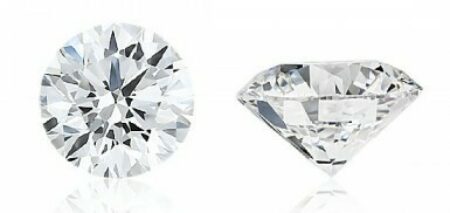8. Table
The table is the large topmost flat facet of the diamond. Because the table is both wide and flat, it reflects the most light, giving the diamond its ‘fire’.
9. Symmetry
The symmetry of a diamond is graded from Excellent, to Very Good, Good and Fair. How it is graded depends on the diamond’s proportions. A diamond is meant to observe certain dimensions; otherwise this has a negative impact on the brilliance of the diamond. The symmetry of its cut is stated on the diamond’s certificate.
10. Polish (diamond finish)
The diamond’s finish determines its brilliance and how the light is reflected. By polishing a diamond, the lines from the different facets become more visible. A diamond that is well polished will reflect and diffuse the entering light better than a poor polished diamond. Just as with symmetry, the diamond’s polish is graded from Excellent (a perfect finish with unobservable facet lines), to Very Good (the lines are extremely difficult to make out), Good (the lines are difficult to make out when magnified) and Fair (the lines are discernable when magnified).
BNT Diamonds advises its possible investors regarding a suitable investment diamond.
Read the following for more information regarding the purchasing of diamonds:



